Intel Launches Comet Lake-U and Comet Lake-Y: Up To 6 Cores for Thin & Light Laptops
by Ryan Smith on August 21, 2019 9:00 AM EST- Posted in
- CPUs
- Intel
- Skylake
- LPDDR4X
- U-Series
- Y-Series
- Wi-Fi 6
- 10th Gen Core
- Comet Lake
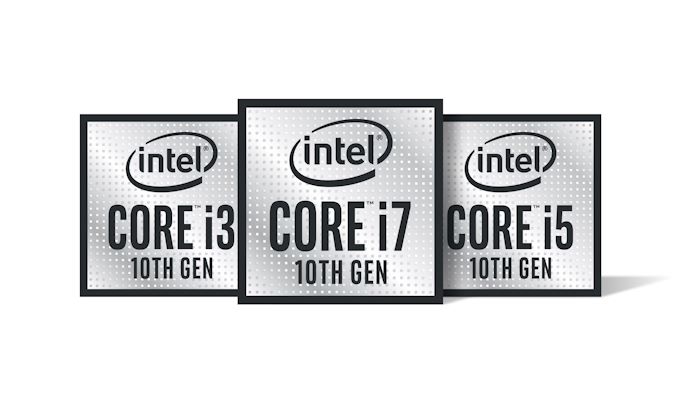
Capping off a busy few weeks for processors for Intel, today the company is announcing the second half of their product stack for their low-power 10th generation Core processors. Dubbed Comet Lake, the sub-15W processors are based on Intel’s existing Skylake CPU architecture and 14nm process, and feature some new additions both improve performance as well as to address specific hardware needs. With up to 6 cores for the U series parts and 4 cores for the Y series, Intel is looking to further push the envelope on multithreaded performance in a thin and light laptop. The new parts will fill out Intel’s traditional U and Y families of processors, and Comet Lake will be sharing the 10th gen Core mantle with Intel’s 10nm Ice Lake parts, with OEMs pulling from both product families for their ultraportable laptops this holiday season.
Overall, the launch of Comet Lake comes at a tricky time for Intel. The company is still trying to right itself from the fumbled development of its 10nm process node. While Intel finally has 10nm production increasingly back on track, the company is not yet in a position to completely shift its production of leading-generation processors to 10nm. As a result, Intel’s low-power processors for this generation are going to be a mix of both 14nm parts based on their venerable Skylake CPU architecture, as well as 10nm Ice Lake parts incorporating Intel’s new Sunny Cove CPU architecture, with the 14nm Comet Lake parts filling in the gaps that Ice Lake alone can’t meet.
The first Ice Lake details were announced a bit earlier this year, with Intel choosing to position its Ice Lake U and Y processors as premium products for equally premium laptops. This leaves Comet Lake U and Y to flesh out the rest of Intel’s product lineup, both in terms of breadth and in performance. In particular, Comet Lake-U parts will now come with 6 CPU cores in a 15W package – up from 4 on the last-generation Whiskey Lake-U as well as the new Ice Lake-U – and similarly, Comet Lake-Y is getting bumped from 2 CPU cores to 4. As a result, the new parts are distinct from Ice Lake, but also not always lower tier; Intel still needs Comet Lake to drive the market in a way that the first round of Ice Lake parts cannot.
Core counts aside, however, while Comet Lake is admittedly another Skylake derivative, it’s not a processor to be trivially dismissed. With the need to produce a fourth iteration of low-power Skylake parts in four years, necessity has driven Intel to address one of Skylake’s traditional shortcomings: memory support. An issue that has dogged Intel and its OEM partners over the past few years, Intel has done the unexpected and actually backported a newer memory controller into Comet Lake-U. As a result the chips can now support LPDDR4X, finally giving OEMs the option to use the well-established memory to outfit their laptops with the faster, higher capacity, and lower power memory. Consequently, Comet Lake may be yet another Skylake part, but it’s also not quite Skylake as we know it.
The Comet Lake U & Y SKUs
Starting things off, let’s quickly take a look at the actual Comet Lake SKUs launching today. As previously mentioned, Intel is producing both U and Y series parts for Comet Lake. Following their well-established pattern, both SKUs are multi-chip modules, placing the CPU die and the PCH on a single package. Comet Lake-U parts will feature a base TDP of 15W, and come in Intel’s usual rectangular U-series package. Meanwhile Comet Lake-Y parts will feature a base TDP of 7W – notably, 2W less than the comparable Ice Lake-Y parts – and come in Intel’s ultra-compact Y-series package.
| Intel Comet Lake-U SKUs | |||||||||||
| AnandTech | Cores |
Base GHz | 1C Turbo GHz |
AC Turbo GHz |
L3 Cache |
TDP PL1 |
IGP UHD |
IGP MHz |
DDR4 | LPDDR4X | Cost |
| i7-10710U | 6C/12T | 1.1 | 4.7 | 3.9 | 12 MB | 15W | 620 | 1150 | 2666 | 2933 | $443 |
| i7-10510U | 4C/8T | 1.8 | 4.9 | 4.3 | 8 MB | 15W | 620 | 1150 | 2666 | 2933 | $409 |
| i5-10210U | 4C/8T | 1.6 | 4.2 | 3.9 | 6 MB | 15W | 620 | 1100 | 2666 | 2933 | $297 |
| i3-10110U | 2C/4T | 2.1 | 4.1 | 3.7 | 4 MB | 15W | 620 | 1000 | 2666 | 2933 | $281 |
Overall there will be 4 U-series parts. This starts with the 2 core i3-1011U, and tops out with the 6 core i7-10710U. Understandably, it’s the latter part that is going to get the most attention of Intel’s product stack, as it’s Intel’s first low-power mobile processor with 6 CPU cores; it is also the only SKU to ship with that many cores. All 4 parts have a 25W cTDP Up mode as well, allowing OEMs to configure their machines for more performance if desired.
Comet Lake-U is based on new silicon from Intel, with the company updating their memory controller as well as further stretching their 14nm manufacturing expertise to boost clockspeeds. All of the Comet Lake-U parts support LPDDR4X at up to 2933 MT/s, while LPDDR3 and DDR4 are supported as well. Compared to the last-generation Whiskey Lake-U parts, clockspeeds are up in general, with the fastest U SKU now turboing to 4.9GHz, and even the slowest i3 turboing to 4.1GHz.
The core count bump for Comet Lake-U has some interesting repercussions for the CPU lineup. With the need to hold PL1 power consumption at 15W, the 6 core part actually has the weakest base clockspeed, at just 1.1GHz. This is a part, more than any other U-series part before, that embodies the idea of dynamic range when it comes to CPU clockspeeds. With lightly threaded workloads the chip needs to be able to boost high to complete a task quickly, and with heavily threaded workloads it needs to be able to run all 6 CPU cores in order to maximize total performance. Even then, it’s the 4 core i7-10510U that gets the highest turbo clock, 4.9GHz for a single core, which is incredibly high for a 15W part and only 100MHz behind what Intel’s top desktop parts turbo to.
Though as our own Dr. Ian Cutress is quick to point out on this matter, it’s likely going to be the PL2 value, which is set by the OEMs themselves, that dictates the average clockspeeds for these most power-hungry parts. Intel can add in cores and validate the parts for high clockspeeds, but they still must obey the power and thermal limits of their environment.
Finally, Comet Lake-U comes with Intel’s new well-tread Gen 9.5 graphics block, which was first introduced in Kaby Lake in 2017. The Core i3 comes with 23 EUs, while all of the other SKUs come with 24 EUs, running at Gen 9.5’s typical clockspeeds of 1.0 to 1.15GHz depending on the specific chip SKU. This, along with the CPU core count differences, will be among the most important distinctions between Comet Lake-U and Ice Lake-U; Comet Lake brings more CPU performance, but Ice Lake packs a lot more GPU power.
| Intel Comet Lake-Y SKUs | ||||||||||
| AnandTech | Cores |
Base GHz | 1C Turbo GHz |
AC Turbo GHz |
L3 Cache |
TDP PL1 |
IGP UHD |
IGP MHz |
LPDDR3 | Cost |
| i7-10510Y | 4C/8T | 1.2 | 4.5 | 3.2 | 8 MB | 7W | 620 | 1150 | 2133 | N/A |
| i5-10310Y | 4C/8T | 1.1 | 4.1 | 2.8 | 6 MB | 7W | 620 | 1050 | 2133 | $292 |
| i5-10210Y | 4C/8T | 1.0 | 4.0 | 2.7 | 6 MB | 7W | 620 | 1050 | 2133 | $292 |
| i3-10110Y | 2C/4T | 1.0 | 4.0 | 3.7 | 4 MB | 7W | 620 | 1000 | 2133 | $287 |
Meanwhile at 7W we have Intel’s Comet Lake Y-series SKUs, where Intel is launching 4 parts here too. At the bottom is the 2 core i3-10110Y, and at the top is the 4 core i7-10510Y. Like Comet Lake-U, this series is receiving a core count bump, going from 2 cores to 4 cores in most SKUs. This is likely to be an even more significant change than going to 6 cores on Comet Lake-U, as it’s a straight-up doubling in CPU cores for Intel’s lowest-power parts, and as well software that utilize 4 cores is more common than software that can scale to 6.
As a result of the core bump, TDPs have gone up. Whereas previous generations of Y-series parts have featured a 5W TDP, Comet Lake-Y moves to 7W as its baseline. This value, which happens to be the previous generation’s cTDP Up value, can be tweaked up and down by OEMs to further tune their designs for cooling and performance. OEMs can cTDP Up to 9W or cTDP Down to 4.5W/5.5W, depending on the specific Comet Lake-Y SKU. We’ll have to see what OEMs ultimately decide to do with their designs, but if Apple is any indication, it feels like the original Y-series dream of fanless designs is tapering off in favor of more powerful designs with limited active cooling.
The addition of CPU cores and new TDPs means that the dynamic range of frequencies has also widened. No Comet Lake-Y part has a base clock higher than 1.2GHz – down from 1.5GHz on Amber Lake-Y – and peak single-core turbo clocks have increased to 4.5GHz for the highest-end SKU.
One notable omission that eagle-eyed readers have probably picked up by now is that Comet Lake-Y’s memory support is listed as LPDDR3, rather than LPDDR4X. This is not an error, and rather is a consequence on how Intel has opted to develop its product lines. According to the company, Unlike Comet Lake-U, the Y-series parts don’t get a new CPU die, and as a result they don’t get the new memory controller with LPDDR4X support. Intel doesn’t specify what specific die is being used, but based on the core counts and features, it’s almost certainly the latest stepping (Stepping 12) of the Whiskey Lake-U die. This means that Comet Lake-Y remains limited to LPDDR3, and consequently designs can have no more than 16GB of RAM.
As for GPU matters, the latest Y parts are pretty much unchanged from their predecessors. All Y SKUs come with a 24 EU Gen9.5 GPU – so there are no oddball 23 EU SKUs here – however thanks to the higher TDPs, the peak GPU turbo speeds now start at 1.0GHz and go to 1.15GHz, a consistent 100MHz improvement over the previous generation.
Finally, both Comet Lake-U and Comet Lake-Y will also support Intel’s Adaptix dynamic power tuning technology, which was first introduced on ice Lake. As with ice Lake, this technology employs an ML-based algorithm that adjusts the PL1 TDP over time to maximize performance. Intel is touting an 8-12% performance improvement here, depending on how intelligently the algorithm can budget a system’s thermal budget. It’s important to note, however, that just like Ice Lake this is an optional feature for OEMs; they need to do the work of profiling systems in order to feed the Adaptix algorithms so that it can be enabled.
Intel 400 Series Chipset: Adding Wi-Fi 6 Support
Alongside Intel’s latest CPU dies, Comet Lake-U also introduces Intel’s latest generation PCH. The on-package chipset is home to the Core CPUs’ ancillary features, and while Intel hasn’t been greatly altering its PCHes over the last couple of years, there is a notable addition for Comet Lake-U: integrated Wi-Fi 6 support.
Keeping pace with Ice Lake here, Intel has updated their PCH to support Wi-Fi 6 (802.11ax) via the company’s CNVi program. When using CNVi, the digital logic required for a Wi-Fi radio is placed on a PCH; OEMs need only add the external RF components via a CNVi module to get a complete Wi-Fi 6 solution. However, as with past iterations this is very much an Intel-only solution, and OEMs can only buy the matching RF module from Intel. Otherwise if they want to go with a third-party solution, they have to buy a complete Wi-Fi 6 radio.
Intel hasn’t stated whether this is the same PCH that’s being used on Ice Lake, but given the company’s penchant for reusing silicon and the fact that it is a 14nm PCH, I wouldn’t be entirely surprised. After all, part of the goal is to bring Comet Lake closer to parity with Ice Lake, so that the two processor lineups can share the 10th generation banner without diverging too much in features.
Meanwhile, it should be noted that only Comet Lake-U gets the new PCH. While Intel doesn't issue an official model number to Comet Lake-Y's PCH, in terms of features and manufacturing processes it's identical to the previous generation PCH. So like LPDDR4X support, the new PCH and its Wi-Fi 6 support is limited to Comet Lake-U. Vendors wanting to add Wi-Fi 6 to Comet Lake-Y will have to use a fully external solution.
Finally, Intel is also talking up Thunderbolt 3 support once again. However in the interest of clarity, there’s nothing really new to report here; Comet Lake isn’t getting on-chip TB3 support like Ice Lake. So while Comet Lake laptops can come with TB3, they’ll need to use a “full fat” external TB3 controller like Titan Ridge.
An Unexpected Surprise: LPDDR4X Support
As mentioned earlier in our introduction, easily the most surprising development with Comet Lake has been the addition of LPDDR4X support. Intel was supposed to support the low-power memory starting with Cannon Lake in 2017, however those plans went awry alongside Intel’s 10nm plans in general. As a result, Intel and it’s OEM partners have been limping along with a mix of LPDDR3 and DDR4 support. Along with now being the slowest supported memory technology, LPDDR3 also has a hard capacity limit of 16GB in a two channel (128-bit) configuration, which has hamstrung OEMs for a couple of years now. This is why we’ve seen OEMs like Apple bite the bullet and move some of their high-performance laptops over to DDR4 – bulking up their batteries as well to compensate for the power consumption hit – as a 16GB limit is untenable for high-end laptops.
In getting its product lines back on track, Ice Lake is already coming with LPDDR4X support. However since Intel can’t supply the entire low-power market with just Ice Lake, this isn’t enough. Instead, Intel has taken the incredibly surprising (and very necessary) move of backporting a newer memory controller for Comet Lake-U, giving the new processor a Skylake CPU core with a next-generation memory controller. This is not a small feat – the memory controller is an integral part of a modern CPU – and while I would have liked to have seen Intel do this last year, given the chaos that has been Intel’s product schedule, I’m not sure Intel could have done it any faster.
At any rate, the inclusion of LPDDR4X support for Comet Lake-U is a welcome development. The newer memory standard will allow OEMs to pack at least 32GB of RAM into their laptop designs (we’re still waiting on confirmation from Intel for the max capacity), and LPDDR4X is even lower in power consumption than the LPDDR3 it replaces. So it’s a double win for OEMs, as they can cut power consumption while adding memory. Better still, LPDDR4X also clocks higher than DDR4, so LPDDR4X laptops will be able to sport the best memory bandwidth of any Comet Lake machines.
Interestingly however, Intel’s memory speeds for Comet Lake-U are actually on the low-side for LPDDR4X. The standard allows for memory as fast as 4266 MT/s, and Intel’s own Ice Lake-U processors can do as fast as 3733 MT/s; however Comet Lake-U only goes to 2933 MT/s. So while a welcome bump in memory bandwidth, Comet Lake-U will be playing second fiddle to Ice Lake-U in this regard. Which is likely to be fitting, as Ice Lake-U needs every bit of memory bandwidth it can get to drive its relatively massive 64 EU Gen11 GPU.
As for Comet Lake-Y, it’s getting left behind here. Intel only produced a new CPU die for Comet Lake-U, so the Y-series parts are reusing an existing LPDDR3/DDR4 die. Since LP DRAM is essential for low-power Y-series designs, this means Y-series laptops will all come with LPDDR3-2133, along with the capacity constraints that includes.
Security
With an update to Intel's product stack also comes an update to the state of various security fixes on Intel platforms. Overall, both Comet Lake-U and Comet Lake-Y are shipping with the same security fixes as Ice Lake, so all three chips are on par with each other.
| Comet Lake-U & Comet Lake-Y Security | |||
| AnandTech | Description | Name | Solution |
| BCB | Bound Check Bypass | Spectre V1 | Software |
| BTI | Branch Target Injection | Spectre V2 | Hardware+OS |
| RDCL | Rogue Data Cache Load | V3 | Hardware |
| RSSR | Rogue System Register Read | V3a | MCU |
| SSB | Speculative Store Bypass | V4 | Hardware+OS |
| L1TF | Level 1 Terminal Fault | Foreshadow | Hardware |
| MFBDS | uArch Fill Buffer Data Sampling | RIDL | Hardware |
| MSBDS | uArch Store Buffer Data Sampling | Fallout | Hardware |
| MLPDS | uArch Load Port Data Sampling | - | Hardware |
| MDSUM | uArch Data Sampling Uncachable Memory | - | Hardware |
In the case of Comet Lake-U, this is a new die that incorporates Intel's latest security fixes. Meanwhile, even though Comet Lake-Y is recycling an existing Whiskey Lake-U die, Intel appears to be using the latest stepping of that die (Stepping 12), which was released specifically to add hardware fixes for the various MDS exploits.
Ice Lake vs. Comet Lake: Sharing the Low-Power CPU Market
While Intel faces plenty of technical challenges on a regular basis, perhaps the biggest challenge the company will be facing right now isn’t even technical. Rather, it’s one of marketing. With the company set to supply both Ice Lake and Comet Lake processors for the low-power market, how do you clearly segment these products? And harder still, how do you clearly communicate this to consumers?
As Ian noted in last month’s Ice Lake-U preview, Intel is essentially competing with itself at this point. Ice Lake and Comet Lake are not vastly different processors, but they do have their differences, as well as their resulting strengths and weaknesses. So with Ice Lake positioned as a premium processor, Intel faces a tough balancing act to justify and upsell Ice Lake without undermining Comet Lake, and all without outright undermining Comet Lake in the process.
Intel’s product segmentation plan then is largely built around the feature differences between the two platforms. Ice Lake will be positioned around GPU and AI performance, while Comet Lake is both Intel’s CPU performance powerhouse, and its everyday workhorse CPU.
This segmentation follows the strengths of each platform. On the GPU and AI side of matters, Ice Lake has a far better GPU, owing both to the newer Gen11 architecture and the much larger number of EUs (up to 64). As well, Ice Lake also has CPU instruction sets like DL Boost (VNNI), which further lift AI performance. Meanwhile Comet Lake has more raw power, especially when it comes to the top 6 CPU core SKU; even with Ice Lake’s IPC improvements, the 4 core parts can’t match the total throughput potential of a 6 core Comet Lake.
All the while, for buyers who need more reasonably priced options than a premium Ice Lake processor or top-tier 6 core Comet Lake, the lower core count Comet Lake parts will be the backbone of Intel’s low-power CPU lineup for this generation. So expect to see Comet Lake showing up in all of the lower-priced laptops that drive the majority of the sales volume in the market.
Meanwhile, to differentiate these parts in terms of model names, Intel is keeping separate numbering systems for Ice Lake and Comet Lake processors. Ice Lake parts will be 4-digit numbers, with the GPU level at the end, while Comet Lake will be 5-digit numbers, with the usual U/Y suffix at the end. It’s by no means the clearest option – that would require not mixing Ice Lake and Comet Lake within 10th gen Core to begin with, as things used to be – but it’s transparent enough that you don’t need to know what specific digits mean to recognize whether a part is Ice Lake or Comet Lake.
| Ice Lake-U vs Comet Lake-U | |||||
| Ice Lake-U | AnandTech | Comet Lake-U | |||
| 10+ | Lithography | '14nm class' | |||
| i7-1065G7 | Example CPU Name | i7-10710U | |||
| 15W 28W |
TDP Options | 15W 25W cTDP Up |
|||
| Up to 4C | Core Counts | Up to 6C | |||
| Sunny Cove | CPU Core | Skylake+++ | |||
| Up to 64 EUs Gen11 |
GPU GT2 Core | Up to 24 EUs Gen9.5 |
|||
| 3.9G (15W) 4.1G (28W) |
Highest Turbo | 4.9G (15W) | |||
| DDR4-3200 LPDDR4-3733 |
DDR | DDR4-2667 LPDDR4X-2933 |
|||
| AVX-512 | AVX | AVX2 | |||
Past that, as Ian has already spilt some ink on the subject of Ice Lake versus Comet Lake, I’ll quote him on the matter:
If you want raw CPU frequency and cores, then Comet Lake still has benefits there, even if we add on Intel’s expected ‘+18%’ IPC claims. It would all come down to how the turbo plays out in each device, and Intel states that it is working closer than ever before with its OEM partners to optimize for performance.
Ice Lake systems on the other hand are going to offer better graphics, are initially all likely to be under the Project Athena heading, and provide good connectivity (Wi-Fi 6), good displays, and really nice battery life for the class of device.
As an aside, Intel’s own comments on the dichotomy when it comes to cTDP Up have proven interesting. According to the company, raising the TDP on Ice Lake will generally increase GPU performance more than CPU performance. Conversely, raising the TDP on Comet Lake will improve CPU performance by more than it improves GPU performance. This is a great, practical example of where the strengths of these parts lie – it would seem that Ice Lake’s biggest power drain is its 64 EU GPU, while Comet Lake’s biggest drain is its 4-6 core CPU.
Performance Expectations
Last, but not least, let’s talk about performance expectations. Intel isn’t just in the business of bumping up product numbers to help OEMs sell “new” machines, but Intel also needs to continue delivering performance improvements generation-over-generation in order to actually sell new hardware. Whether it’s from improving clockspeeds, improving core counts, improving IPC, or a mixture of all of those things, Intel still needs to push performance forward.
Unsparingly then, Intel expects its new Comet Lake processors to be its fastest low-power parts yet. With the caveat that this is going to be heavily dependent on how OEMs configure their laptops, this is definitely achievable for Intel, even with the fact that they’re still on the Skylake CPU architecture and 14nm process. I am skeptical that real-world performance improvements will meet Intel’s claims – we’ll have to confirm that ourselves in our laptop reviews – but improvements are possible, especially in multithreaded scenarios that can leverage the additional CPU cores.
Unfortunately, Intel’s own comparisons are practically apples-to-oranges when it comes to performance. For their official presentation, Intel opted to compare the i7-10710U in cTDP Up mode (25W) to the i7-8565U at its normal 15W TDP. So with a further 10W of PL1 TDP, there’s a lot more opportunity for Comet Lake-U to turbo to its highest clockspeeds. Similarly, in the Office 365 test, which is a multitasking test presumably intended to showcase the benefits of more CPU cores, we’re seeing the combined effect of the extra cores and the extra 10 Watts, so it’s difficult to separate the two.
The battery life test, at least, is at the same power levels; both chips are configured to 15W for that test, which is a video playback test.
It goes without saying that as nice as the extra cores and additional turbo headroom are, we’re going to need to test this ourselves to see what the real-world performance and battery implications are like.
Of course, Intel’s real goal is to help its OEMs sell new laptops to customers who already have machines that are turning several years old. Intel’s numbers here are all versus the Broadwell-based i7-5550U with the same 25W/15W split. But at this point Skylake and Intel’s highly tuned 14nm process shouldn’t have much trouble outrunning their first-generation 14nm parts – just likely not quite to the degree that Intel is listing.
Comet Lake, Landing in Retail Later This Year
Wrapping things up, let’s talk about availability. While today is the official launch for Intel’s new Comet Lake parts, retail availability will lag this launch as it takes time for OEMs to get machines to market. The turnaround time is going to be less than Ice Lake, but the full gamut of Comet Lake systems aren’t going to be available right away.
Looking at various embargoed OEM announcements going out this morning, it’s sounding like OEMs are expecting to start shipping their quad-core Comet Lake systems this month, but the hex-core systems will only become available in October, or the start of Q4. This is roughly a month behind the first ice Lake systems, which have already been announced for September. So while the full Comet Lake lineup won’t lag Ice Lake by too much, it looks like there is going to be a month or so gap until things fully settle. Which leaves Comet Lake arriving just in time for the holiday season, and all of the sales volume that brings.


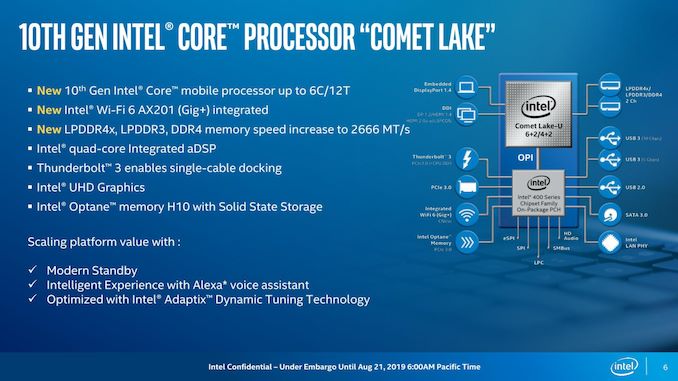

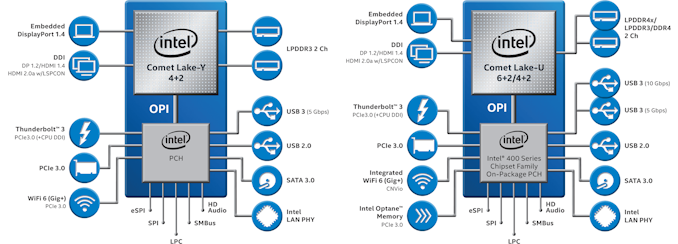
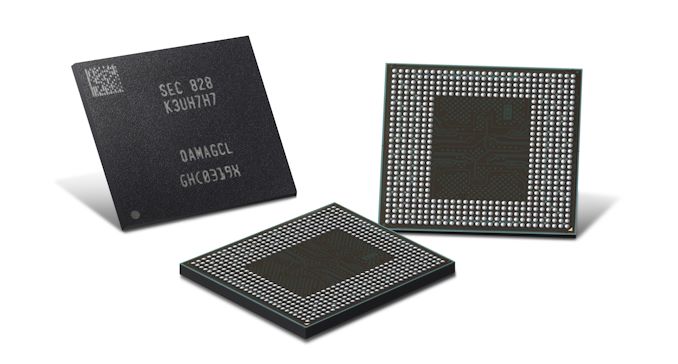
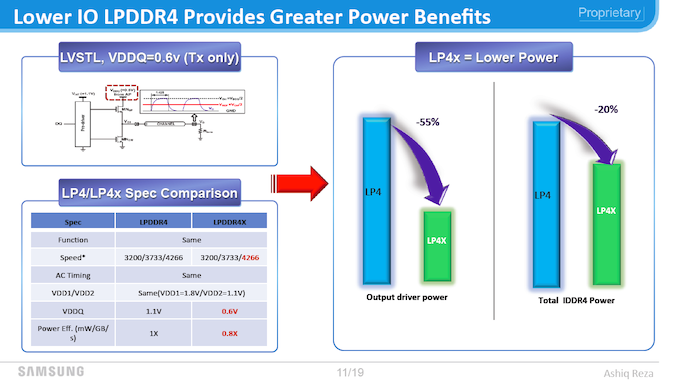
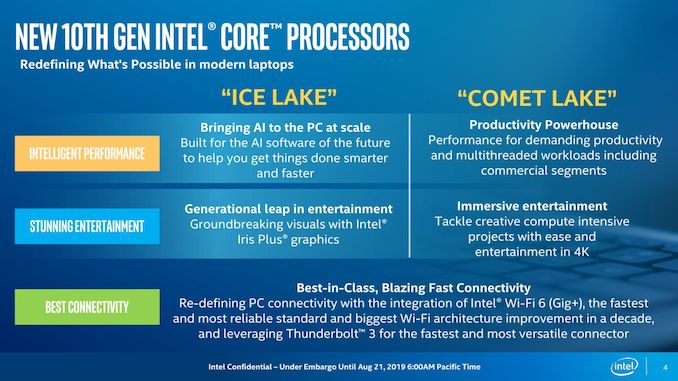

















130 Comments
View All Comments
drexnx - Wednesday, August 21, 2019 - link
if Ice Lake basically traded blows with Amber Lake (or was it Whiskey Lake? - seriously Intel, use a new second noun in your codenames, we're tired of lakes!), how is it going to compete with Comet Lake?Santoval - Wednesday, August 21, 2019 - link
Just like the article mentioned, it will have a weaker CPU performance watt for watt (and *much* weaker if we include the 6-core part in the comparison) but stronger iGPU performance. Ice Lake also has a better video encoding engine, faster and more efficient wireless (which you actually require multiple devices to take advantage of, i.e. have a WLAN with 3+ routers all supporting Wi-Fi 6) and better AI inference performance.In other words if you need both the best 6-core 15W CPU with the best iGPU you need to wait a few months for the upcoming Zen 2 based APUs by AMD, which will also have faster Navi iGPUs. Let's just hope AMD upgrades their memory controller to LPDDR4x-3733 as well. While it has not yet been officially confirmed AMD will almost certainly move to 6-core APUs as well as the max option. TSMC's 7nm node allows them to do that with a smaller die than Intel's 6-core Comet Lake-U.
movax2 - Wednesday, August 21, 2019 - link
Was there any information about Zen 2 APU with more than 4 cores?Fulljack - Wednesday, August 21, 2019 - link
currently no. it's all speculation for now.yankeeDDL - Thursday, August 22, 2019 - link
I'd say quite realistic though. Ryzen 4*** mobile should use Zen2 architecture and 7nm. 4C/8T should be the entry level, although for ultra-low power they may go to 2C/4T, but I doubt it.I hope to see an 8C/16T for 15W: seems doable, seeing that intel gets to 6C/12T with a 14nm and a design not optimized for high core count.
0ldman79 - Thursday, August 22, 2019 - link
AMD is bumping their core voltage to get those yields though.Not sure 7nm is going to perform as well in mobile platforms as it does in desktop.
More than a little concerned about that actually. Maybe a later batch/revision of the CPU will have better yields and lower core voltages.
Fulljack - Friday, August 23, 2019 - link
those voltage are safe. because in desktop, those voltage aren't sustained, but for pbo which usually just a few seconds.it's safe. it's uncommon to see voltage as high as 1.5v today, but it won't fry your cpu or motherboard. don't worry.
peevee - Thursday, August 29, 2019 - link
7nm is going to operate in mobile much better because you don't need frequencies that high. It is going to be easy to compete with Intel's "6 cores" operating @ 1.1GHz each. 7nm is going to 3GHz in freaking PHONES.Byte - Thursday, August 22, 2019 - link
Current Ryzen Mobile CPUs have trash battery life. Hopefully they can fix that with Zen2 mobile. I'm eyeing a Dell 13 XPS aio with the Icelake for the insane battery life.0ldman79 - Friday, August 23, 2019 - link
Rumor has it the 3000 series has fixed most of that, but I have yet to see it.Even my i5 6300HQ has better battery life than the Zen+ AMD laptops.